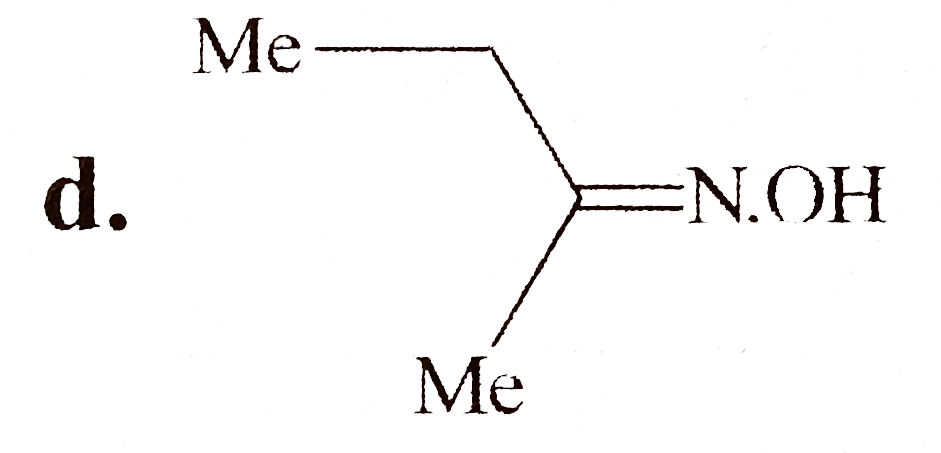Which of the following matched correctly: I.P.Reason(A)N>OHalf filled configuration(B)Zr<HfLanthanoid contraction(C)Na>KZeff(D)Al<GaTransition contraction
Only A
A, B, C, D
Only C
Only C, D
The correct Answer is:C
To solve the question regarding the correct matches between ionization potential (I.P.) and their respective reasons, we will analyze each option step by step.
Step 1: Analyze Option A
- Elements: Nitrogen (N) and Oxygen (O)
- Claim: N has a greater ionization potential than O.
- Reason: Half-filled configuration.
Analysis:
- Nitrogen has the electronic configuration of 2s² 2p³ (half-filled), while Oxygen has 2s² 2p⁴ (not half-filled).
- Half-filled configurations are more stable due to symmetry and exchange energy.
- Therefore, N has a higher ionization potential than O.
Conclusion: Option A is correctly matched.
Step 2: Analyze Option B
- Elements: Zirconium (Zr) and Hafnium (Hf)
- Claim: Zr has a lower ionization potential than Hf.
- Reason: Lanthanoid contraction.
Analysis:
- As we move from Zr to Hf, we encounter the f-block elements (lanthanides) which cause poor shielding due to the filling of the f-orbitals.
- This results in an increase in effective nuclear charge, leading to a higher ionization potential for Hf compared to Zr.
Conclusion: Option B is correctly matched.
Step 3: Analyze Option C
- Elements: Sodium (Na) and Potassium (K)
- Claim: Na has a greater ionization potential than K.
- Reason: Z_eff (effective nuclear charge).
Analysis:
- As we move down the group from Na to K, the atomic size increases, and the effective nuclear charge felt by the outermost electron decreases.
- This results in a lower ionization potential for K compared to Na.
Conclusion: Option C is correctly matched.
Step 4: Analyze Option D
- Elements: Aluminum (Al) and Gallium (Ga)
- Claim: Ga has a greater ionization potential than Al.
- Reason: Transition contraction.
Analysis:
- Gallium has d-electrons, which lead to a poor shielding effect. This results in a higher effective nuclear charge compared to Al, thus increasing the ionization potential of Ga.
Conclusion: Option D is correctly matched.
Final Conclusion
All options A, B, C, and D are correctly matched with their respective reasons.
Final Answer
All options are correctly matched.
---
- Elements: Nitrogen (N) and Oxygen (O)
- Claim: N has a greater ionization potential than O.
- Reason: Half-filled configuration.
Analysis:
- Nitrogen has the electronic configuration of 2s² 2p³ (half-filled), while Oxygen has 2s² 2p⁴ (not half-filled).
- Half-filled configurations are more stable due to symmetry and exchange energy.
- Therefore, N has a higher ionization potential than O.
- Elements: Zirconium (Zr) and Hafnium (Hf)
- Claim: Zr has a lower ionization potential than Hf.
- Reason: Lanthanoid contraction.
- As we move from Zr to Hf, we encounter the f-block elements (lanthanides) which cause poor shielding due to the filling of the f-orbitals.
- This results in an increase in effective nuclear charge, leading to a higher ionization potential for Hf compared to Zr.
- Elements: Sodium (Na) and Potassium (K)
- Claim: Na has a greater ionization potential than K.
- Reason: Z_eff (effective nuclear charge).
- As we move down the group from Na to K, the atomic size increases, and the effective nuclear charge felt by the outermost electron decreases.
- This results in a lower ionization potential for K compared to Na.
- Elements: Aluminum (Al) and Gallium (Ga)
- Claim: Ga has a greater ionization potential than Al.
- Reason: Transition contraction.
- Gallium has d-electrons, which lead to a poor shielding effect. This results in a higher effective nuclear charge compared to Al, thus increasing the ionization potential of Ga.
Conclusion: Option D is correctly matched.
All options A, B, C, and D are correctly matched with their respective reasons.
All options are correctly matched.
Topper's Solved these Questions
- CHEMISTRY AT A GLANCEBOOK - ALLENCHAPTER - CHEMISTRY AT A GLANCEEXERCISE - ORGANIC CHEMISTRY
472 Videos
- CHEMISTRY AT A GLANCEBOOK - ALLENCHAPTER - CHEMISTRY AT A GLANCEEXERCISE - ORGANIC CHEMISTRY
472 Videos
- Chemical EquilibriumBOOK - ALLENCHAPTER - Chemical EquilibriumEXERCISE - All Questions
30 Videos
- ELECTROCHEMISTRYBOOK - ALLENCHAPTER - ELECTROCHEMISTRYEXERCISE - EXERCISE -05 [B]
38 Videos
Similar Questions
Which of the following show G.I.?
a.
b.
c.
d.
View SolutionWhich one of the following is correctly matched :-
(i)z=1(A)−ve deviation(ii)z<1(B)+ve deviation(iii)z>1(C)Ideal behaviour(iv)zc=3/8(D)At crtical conditions
View SolutionWhich one of the following pairs is correctly matched?
(i)Vitamin B12(a)Anaemia(ii)VitaminA(b)Night blindness(iii)VitaminC(c)Scurvy(iv)VitaminE(d)sterility
View SolutionWhich of the following are relations from B to A, where A={a,b,c,d} and B={x,y,z}?
{(b,y),(c,z),(a,x)}
View SolutionWhich of the following are relations from B to A, where A={a,b,c,d} and B={x,y,z}?
{(x,b),(y,a)}
View SolutionWhich of the following are relations from B to A, where A={a,b,c,d} and B={x,y,z}?
{(z,a),(z,b),(z,c),(z,d)}
View SolutionWhich of the following are relations from B to A, where A={a,b,c,d} and B={x,y,z}?
{(x,d),(y,c),(z,b)}
View SolutionWhich of the following pair is correctly matched A.Fungi - Regeneration B.Mosses - Fragmentation C.Planaria - Budding
View SolutionWhich of the following are relations from B to A, where A={a,b,c,d} and B={x,y,z}?
{(z,x),(z,y),(x,a)}
View SolutionWhich of the following DNA is left handed?
(a) B-DNA
(b) A-DNA
(c) D-DNA
(d) Z-DNA
View Solution
